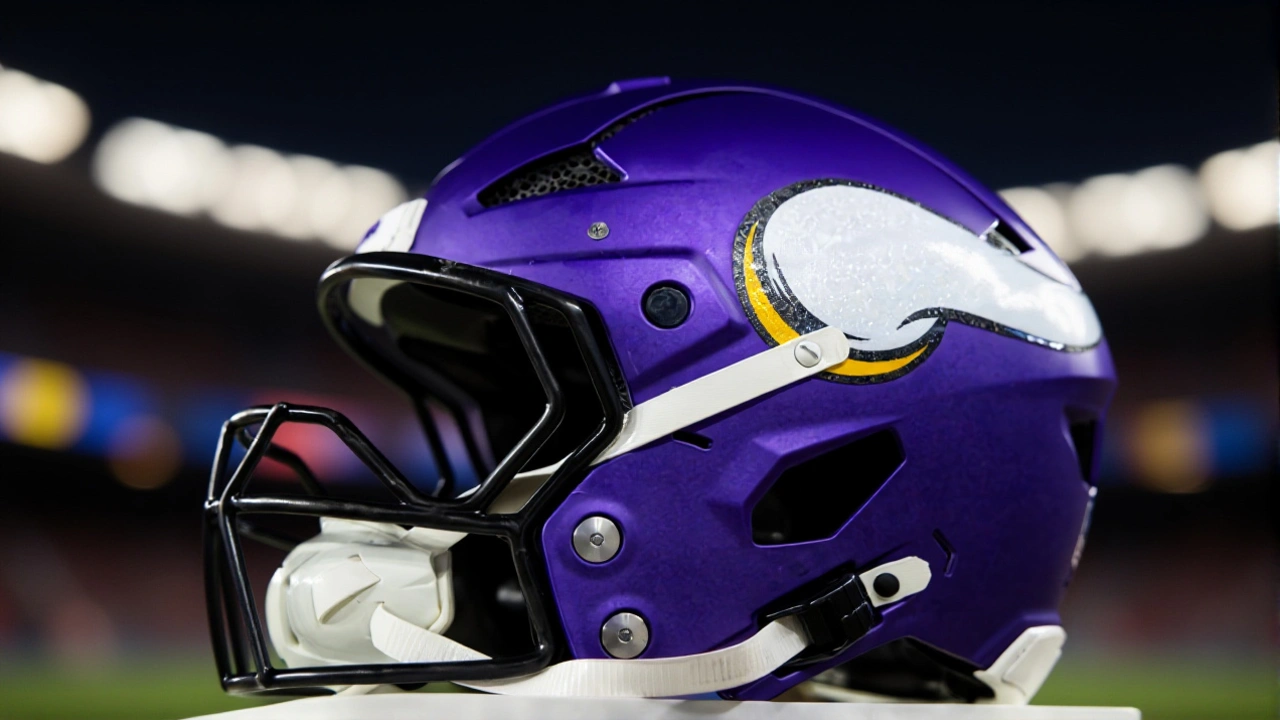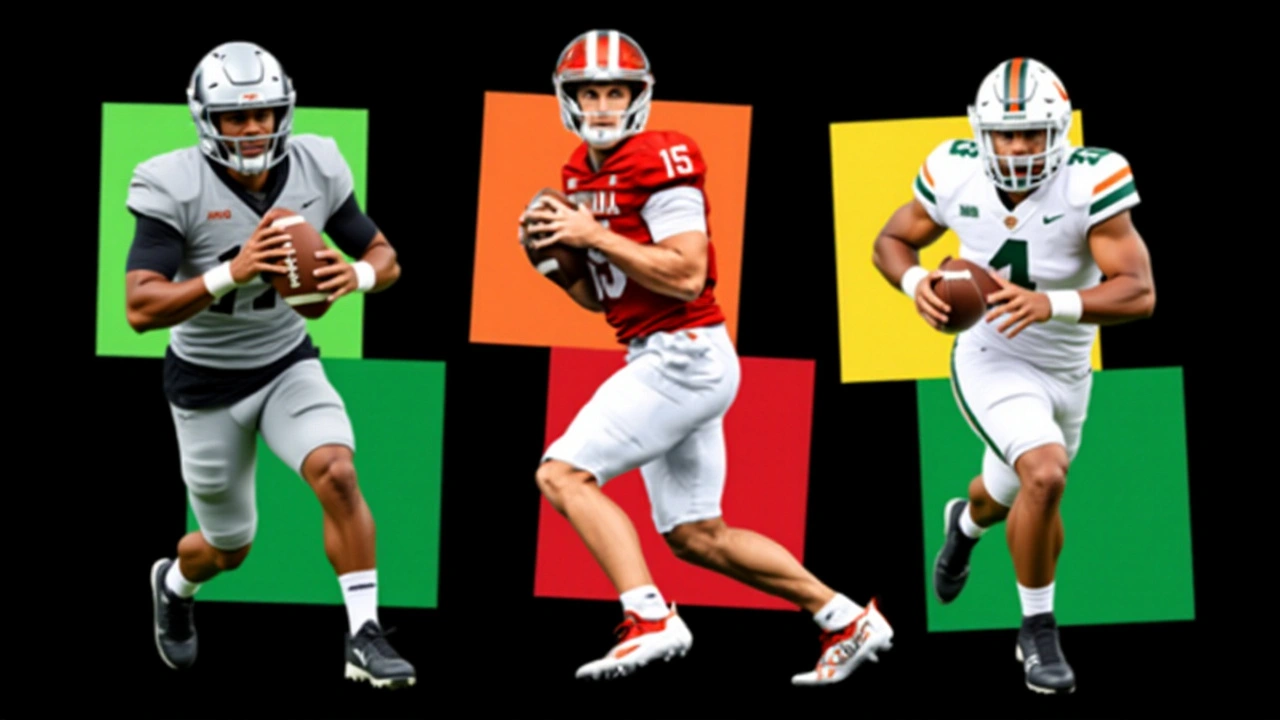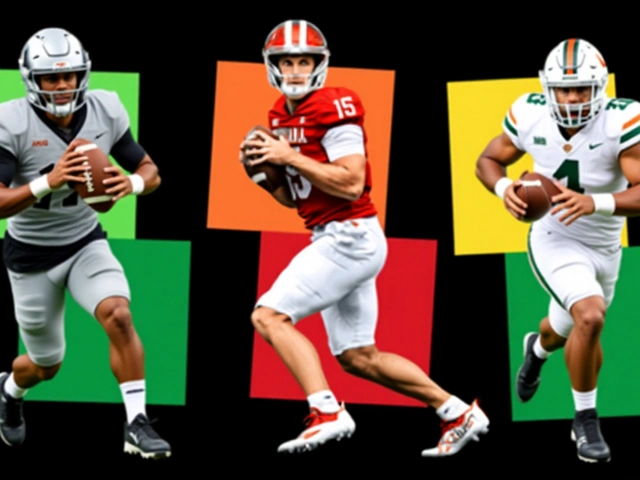When Arch Manning, the starting quarterback for Texas Longhorns, was named in a fresh 2026 NFL mock draft, the buzz was immediate.
The mock, crafted by Nick Baumgardner of The Athletic, slots Manning with the Indianapolis Colts. The pick isn’t just a headline‑grabbing gimmick; it’s a nod to the storied Peyton Manning legacy that still echoes through the franchise’s locker room.
Why Arch Manning Is Dominating Mock Draft Talk
Even before the Longhorns’ opening game against the defending champion Ohio State Buckeyes, analysts have been chewing over Manning’s draft stock. At 6‑4 and 215 pounds, he blends size with a quick release, a combination that scouting reports rank among the top five quarterback traits for 2026 prospects.
Data from Daft on Draft shows that, as of week 0, Manning appears in 12 of their 25 first‑round scenarios – a higher frequency than any other quarterback still at the college level. The site also notes a 38 % “early‑declare” probability based on historical trends, though the figure is purely statistical, not a definitive forecast.
The Colts Connection and the Manning Legacy
The idea of Manning heading to Indianapolis isn’t just a fanciful pairing. FanDuel odds, which underpin the mock draft’s order, factor in the franchise’s recent Super Bowl‑winning aspirations. The Colts have spent the last three seasons within the top‑five AFC playoff brackets, and their front office is openly scouting for a quarterback who can sustain that momentum.
When asked about the potential fit, Colts general manager Chris Ballard (quoted in a recent press briefing) said, “If a player with Arch’s pedigree and poise were to declare, we’d be eager to see how he meshes with our offensive scheme.” The comment underscores the lingering hope that the Manning name could once again become synonymous with Indianapolis success.
How Analysts Build Early Draft Boards
Most mock drafts, including Baumgardner’s, lean heavily on preseason Super Bowl betting odds. The logic? Teams with higher odds are presumed to finish stronger, thus receiving earlier picks. Adjustments are then made for AFC/NFC playoff slotting – a nuance that keeps the projections from being overly simplistic.
Beyond the odds, analysts weigh week‑zero performances. Manning’s 245‑yard, two‑touchdown showing against Ohio State (a 31‑24 Longhorn win) pumped his ADP (average draft position) by roughly 3 spots, according to Daft on Draft. Meanwhile, quarterbacks like Caleb Williams and Bo Nix have seen modest slides after sub‑par opening games.
- Arch Manning – projected ADP: 5‑12
- Caleb Williams – projected ADP: 13‑22
- Bo Nix – projected ADP: 23‑34
- J.J. McCarthy – projected ADP: 35‑48
- Michael Penix Jr. – projected ADP: 49‑61
The list isn’t static; every Monday night game reshapes the board.

What the Uncertainty Means for Texas and the NFL
While mock drafts are fun exercises, the real question is whether Manning will declare after the 2025 season or return for another year of development. Texas head coach Steve Sarkisian has hinted that “the decision will hinge on Arch’s growth, the team’s performance, and where he feels he can best prepare for the next level.”
If Manning stays, the Longhorns retain a franchise quarterback and keep a marquee name attracting recruits. If he jumps, the NFL landscape could shift dramatically – the Colts might finally secure a heir to the Peyton Manning legacy, and the draft’s quarterback market could tighten, forcing teams like the Seattle Seahawks and New York Giants to adjust their scouting priorities.
Looking Ahead: What to Watch This Season
Analysts recommend keeping an eye on three key indicators:
- Performance against top‑ranked defenses – Week 3 matchups will test Manning’s poise under pressure.
- Quarterback coaching changes – Texas hired a former NFL offensive coordinator this offseason, potentially boosting Manning’s NFL readiness.
- Draft advisory board feedback – The NCAA’s advisory board will release eligibility assessments in February; a “yes” could accelerate a declaration.
Until those data points land, the mock drafts will keep evolving, and fans will continue debating the Colts‑Manning story at every coffee shop and Twitter thread.
Frequently Asked Questions
Will Arch Manning declare for the 2026 NFL Draft?
The decision remains unsettled. Texas coaches say it depends on his development and the team’s success, while the NCAA advisory board will give a formal eligibility opinion in February. If he feels ready, a declaration before the season’s end is possible.
Why does the mock draft place Manning with the Indianapolis Colts?
Nick Baumgardner’s mock ties the pick to the Colts because of the franchise’s historic connection to the Manning family and its current need for a long‑term quarterback. The placement is speculative but reflects the Colts’ position in the early‑round odds model.
Which other quarterbacks are rising in first‑round consideration?
Besides Manning, analysts highlight Caleb Williams (USC), Bo Nix (Arizona State), J.J. McCarthy (Michigan) and Michael Penix Jr. (Washington State) as the next batch of signal‑callers gaining traction after impressive early‑season performances.
How do preseason Super Bowl odds influence mock drafts?
Odds help project which teams will finish near the top of the league, thus securing higher picks. Analysts adjust the draft order based on the odds, then layer in positional needs and individual prospect evaluations to create a realistic mock.
What impact could Manning’s potential move to Indianapolis have on the franchise?
A successful transition would reinforce the narrative of the Manning dynasty within the Colts, boosting fan engagement and potentially accelerating the team’s Super Bowl push. It would also affect the league’s quarterback market, prompting other teams to reassess their own draft strategies.


